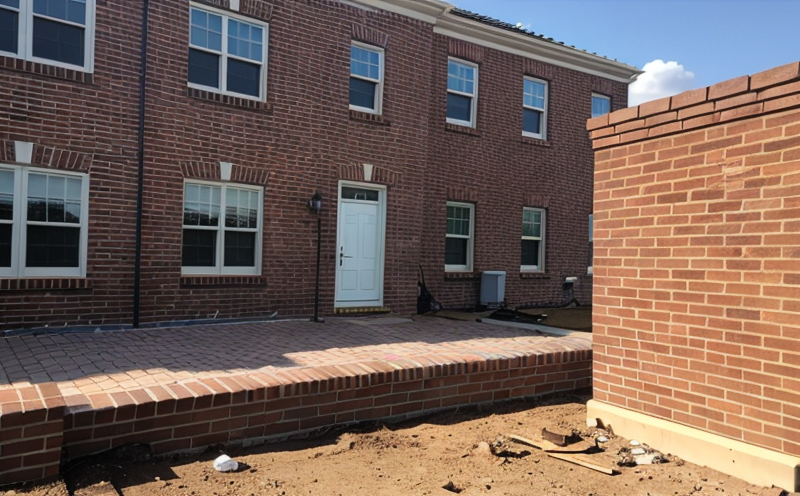EN 1015 Mortar Consistency and Plasticity
The EN 1015 standard is a European Norm that specifies methods for determining the consistency of mortar mixtures. Mortar, used primarily in construction to bind bricks, stones, or other masonry units together, plays a crucial role in building and infrastructure projects. The consistency of mortar directly impacts its workability, strength, and durability—key factors influencing the overall quality and longevity of structures.
Mortar consistency is measured using several techniques outlined in EN 1015-4, with plasticity being one such parameter. Mortar plasticity refers to the ease with which a fresh mortar can be worked into place without losing its cohesive properties. This characteristic ensures that workmen on site are able to apply the mortar uniformly and effectively.
The testing of mortar consistency and plasticity is essential for ensuring compliance with construction standards, quality control, and meeting project-specific requirements. This service allows clients to ensure their materials meet the exacting specifications required by international norms like EN 1015-4.
During the test, a standard cylinder mold or other specified container is filled with mortar mix according to precise specifications in the standard. The consistency of the mortar is then determined using a testing rod or similar device that measures how far the mixture can be pushed down into the mold before it begins to lose its shape.
For plasticity tests, the focus shifts towards assessing the flow properties of fresh mortar under controlled conditions. This test helps determine the optimal workability of the mortar, which is critical for ensuring that it can be placed and finished effectively without compromising on quality or strength.
The results from these tests are used to make adjustments in the formulation of the mortar mix during production, thereby enhancing consistency and plasticity. These adjustments might include modifying the water content, type of cement, or addition of other admixtures like pozzolans or fibers.
Understanding the parameters that influence consistency and plasticity is vital for quality managers, compliance officers, R&D engineers, and procurement teams involved in construction projects. By adhering to standards such as EN 1015-4, these professionals ensure that their products meet not only regulatory requirements but also the specific needs of the project.
Accurate measurement and control of mortar consistency and plasticity are critical for several reasons:
- To ensure proper workability during application
- To achieve the desired strength after curing
- To minimize shrinkage cracks in masonry structures
- To enhance overall durability and resistance to environmental factors
- To meet project-specific requirements set by architects or engineers
- To comply with international standards like EN 1015-4 for mortar consistency and plasticity
By meticulously following the procedures outlined in EN 1015, laboratories can provide reliable data that supports informed decision-making in construction projects. This ensures that materials used are optimized for performance while also aligning with global best practices.
Why It Matters
The importance of consistent mortar cannot be overstated when it comes to the integrity and longevity of building structures. Mortar serves as a critical component in masonry construction, providing not only adhesion but also flexibility that helps absorb stresses without compromising structural stability.
Consistent mortar ensures that each brick or stone is properly bonded, leading to a more robust structure resistant to environmental factors such as wind, rain, and temperature changes. This consistency is particularly important for large-scale infrastructure projects where the cumulative effect of even minor inconsistencies can lead to significant issues over time.
The plasticity aspect of mortar plays an equally vital role in construction processes. It ensures that the mortar can be easily spread and worked into place, which is essential for achieving a smooth and level surface finish. Poorly plastic mortar can lead to uneven application, making it challenging to achieve the desired aesthetic and functional outcomes.
From a compliance perspective, adherence to standards like EN 1015-4 ensures that products meet not only regulatory requirements but also international best practices. This is crucial for companies operating across multiple markets or jurisdictions where different standards may apply.
The impact of inconsistent mortar can be seen in various ways:
- Structural instability leading to cracks and failures
- Increased maintenance costs due to premature deterioration
- Potential safety hazards for occupants and workers
- Increased material waste during application
- Time delays due to rework or corrective measures
- Reputational damage from substandard construction practices
In essence, ensuring mortar consistency and plasticity is not just about meeting specifications; it's about building trust and delivering high-quality products that meet the highest standards of performance and durability.
Eurolab Advantages
At Eurolab, our commitment to excellence in testing services extends to every aspect of our operations. When it comes to EN 1015 mortar consistency and plasticity tests, we offer a range of advantages that set us apart:
- Absolutely Accurate Testing: Our state-of-the-art facilities are equipped with the latest instrumentation and calibrated tools necessary for precise measurement.
- Comprehensive Expertise: Our team comprises highly qualified professionals with extensive experience in material testing, ensuring accurate interpretation of results.
- Strict Compliance: We adhere to all relevant international standards including EN 1015-4, guaranteeing that our tests meet the highest quality assurance benchmarks.
- Detailed Reporting: Our reports are comprehensive and detailed, providing not only numerical data but also insights into potential areas for improvement based on your specific needs.
- Customer-Centric Approach: We understand that every project is unique. That’s why we tailor our services to meet the specific requirements of each client, ensuring that you get exactly what you need.
- Fast Turnaround Times: Our efficient processes mean that clients can expect timely results without compromising on quality.
- Global Recognition: As a leading testing laboratory, Eurolab is trusted by numerous international organizations and has achieved global recognition for our expertise and reliability.
In conclusion, choosing Eurolab for your EN 1015 mortar consistency and plasticity tests means partnering with an organization that prioritizes precision, accuracy, and customer satisfaction. Our services are designed to help you achieve the best possible outcomes in your construction projects, ensuring long-lasting structures and satisfied clients.





